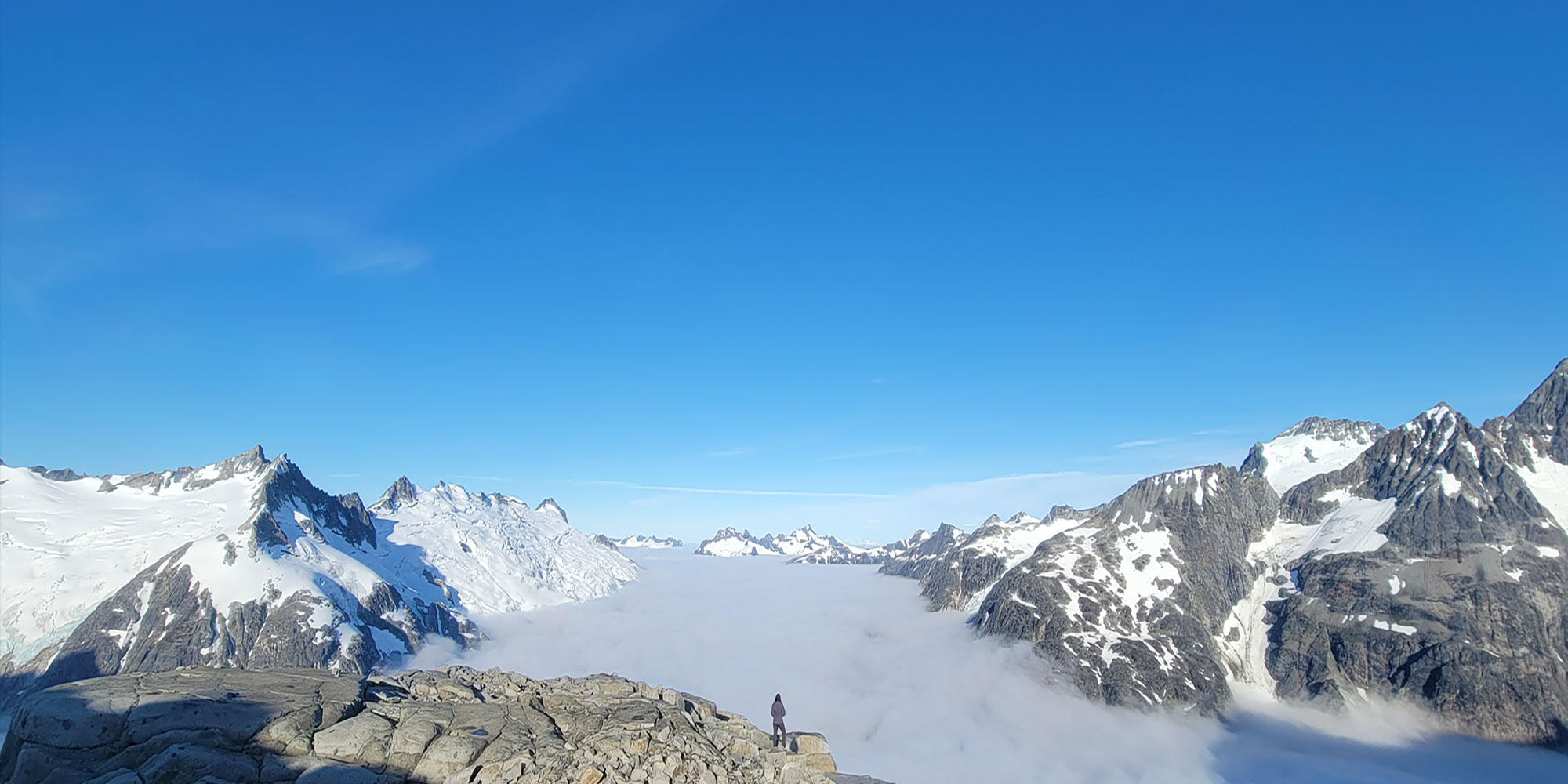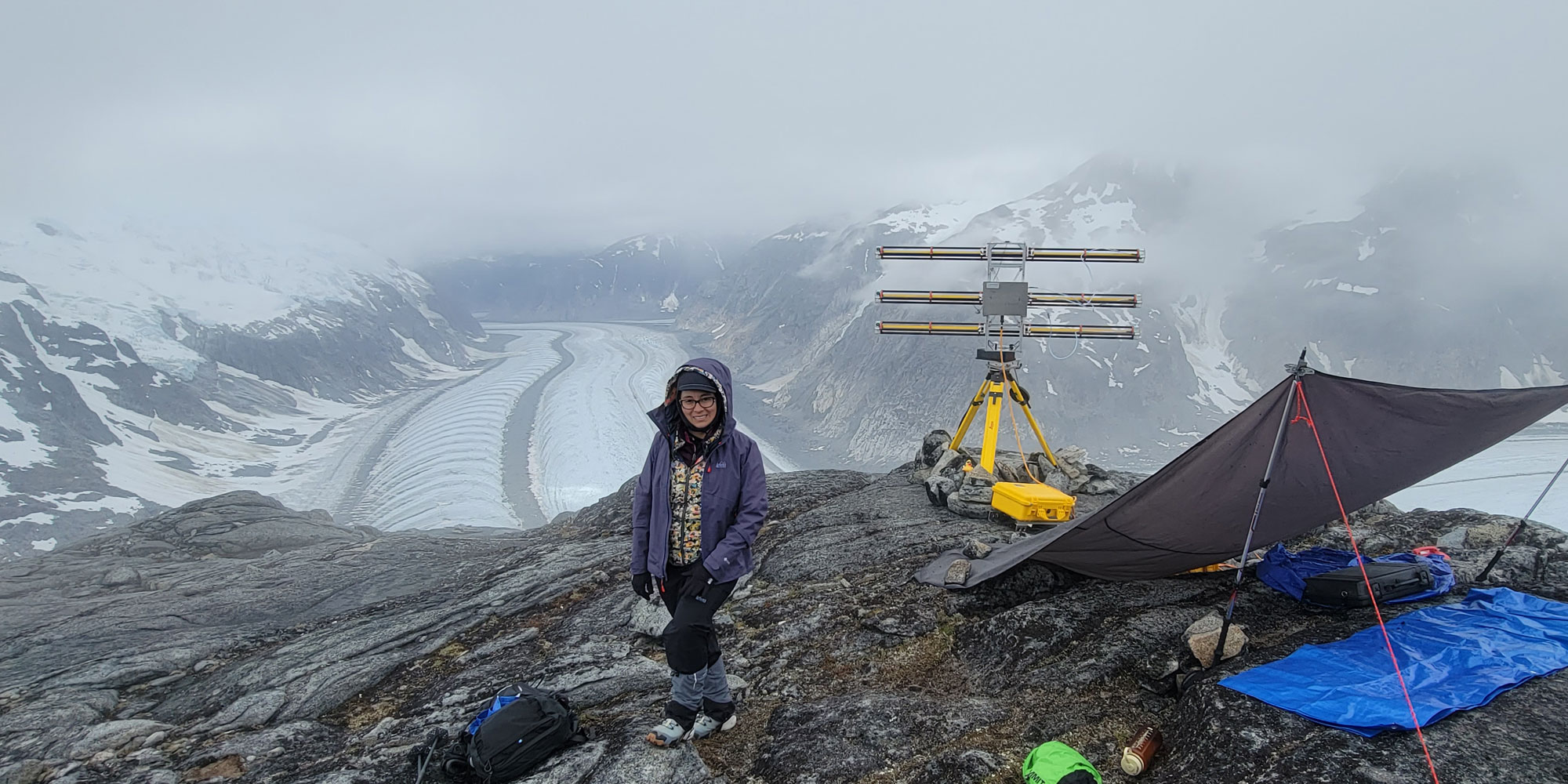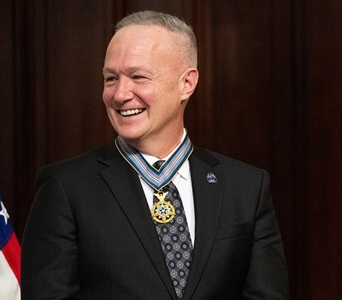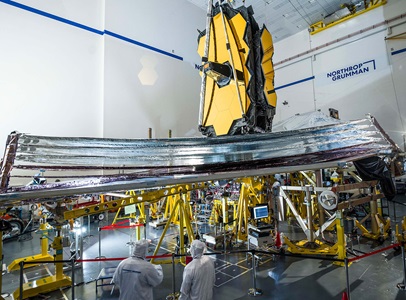Life on a Moon Base

By Brandon Hartman
Late at night, from the confines of her bunk in the cramped wood cabin she shared with seven others, Krystal Puga would often listen to what sounded like the belly of the Earth groaning. A Northrop Grumman engineer and mission architect from Redondo Beach, California, Krystal called an arctic research site in Juneau, Alaska, home for three weeks. There, giant glaciers, some stretching as far as the eye could see, would often create the acoustics of glacial melting, from the sharp crack of falling ice to the gurgling sounds of trapped water.
From these out-of-this-world sounds, to living thousands of miles away from civilization at 7,000-feet elevation amid the fog, snow and ice, it’s no wonder that the Juneau Icefield is one of the top geoscience research and field training locations on Earth. It also serves as an analog site for the lunar surface.
Planetary Preparation
With conditions of extreme weather, isolation, confined spaces, scientific workload, lack of communications and limited resources for running water and power, the setting of the Juneau Icefield arctic research site is similar to what is expected on a planetary exploration mission. In July 2022 — sponsored by Northrop Grumman and as part of earning her master’s degree in human spaceflight from the University of North Dakota — Krystal volunteered to teach a three-week course on lunar base architecture and space human factors for the Juneau Icefield Research Program.
For Krystal, who supports Northrop Grumman’s Human Operations and Exploration team, researching designs and human factors in preparation for an eventual lunar habitat was a once in a lifetime opportunity. She taught field scientists from across industry who were training in glaciology, geology and environmental science about how their experiences can help inform lunar base architecture. At the same time, she conducted her own research focused on how architecture, environment and job factors influence behavior to affect health, safety and performance.
An isolated environment can be challenging, and astronauts won’t have many of Earth’s luxuries on early lunar missions. Human factors can be the difference between mission success and failure. “It was one thing reading about what makes a good habitat, but it was a whole other learning experience to actually place myself in a simulation,” said Krystal. “The tiniest details — a window or a personal item, like a colleague bringing their guitar — can truly make a difference. Space is limited and every item must have a purpose, but when everyone was cold and wet, sitting around the stove listening to music was key to our morale.”
A Modern Day Messenger
Krystal joined Northrop Grumman after graduating from college, hooked on the idea of supporting NASA’s James Webb Space Telescope (Webb). She went on to work on Webb for 10 years, through launch, and notes that Webb’s deployment was the most exhilarating moment of her life.
When the first Webb images were released to the public in July of last year, Krystal was in Alaska preparing for her helicopter ride out to the icefield. For two days, the helicopter couldn’t fly due to weather conditions; while waiting, Krystal visited an internet café near her remote location and printed the groundbreaking images.
Soon after, with her printouts in tow, she was on the hour-and-a-half-long flight, overlooking glaciers and pristine, white snow that very few people have the opportunity to witness.
“When I arrived, the field scientists had been on site for a month prior with no communication, so to arrive with pictures from Webb, I felt like a messenger in the Middle Ages,” said Krystal.
For Krystal, working closely with the research program participants — many of whom were taking measurements to understand glacier shrinkage using techniques and instruments similar to what will be used on the lunar surface — was perhaps the highlight of the experience.
Her experience in Alaska was transformational, and she is now using her findings to influence designs of lunar habits and terrain vehicles for future missions such as the Artemis mission, which will establish the first long-term presence on the moon.
“I am so grateful to have worked on a groundbreaking effort such as Webb and to now contribute to going forward to the moon and beyond,” said Krystal. “It is an incredible feeling playing a part in the next generation of space exploration with Northrop Grumman.”



